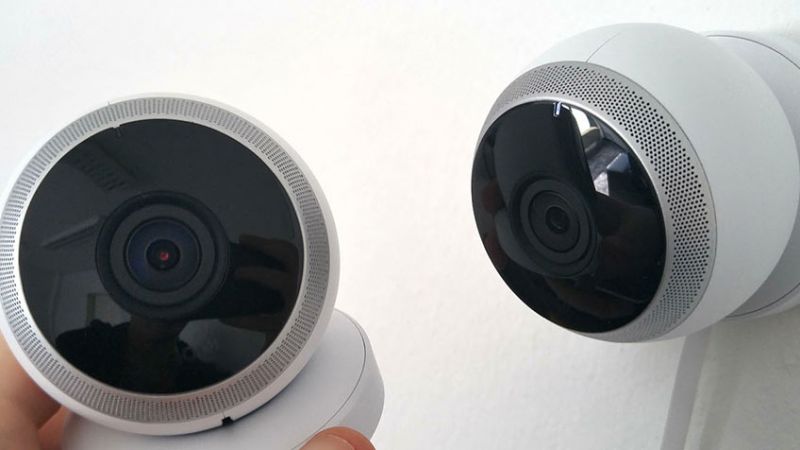
With home burglaries and security breaches on the rise across the UK, investing in a reliable home security system is no longer optional - it's essential. Whether you're a first-time homeowner, a landlord renovating a flat, or a tradesperson looking to recommend solutions to your clients, understanding what to consider before buying a security system can save you time, money, and potential headaches down the line.
Most people dive into buying without fully understanding their needs, ending up with systems that are either too limited or unnecessarily complex and expensive. In this guide, we'll uncover what makes an effective, well-suited home security system - helping everyone from DIY enthusiasts and design-conscious homeowners to architects and tradespeople make an informed decision.
So, before you open your wallet or commit to a system online... watch this space. Here's exactly what to consider before you buy.
1. Assess Your Property's Unique Security Needs
The most important first step is to assess what kind of protection you need. A flat in a busy city centre requires a very different setup than a detached cottage in the countryside. Understanding your environment helps determine camera coverage, points of entry, and types of alerts you might need.
Ask yourself how many entry points your home has? Are there any blind spots or dark corners around the perimeter of the house? Is your property street-facing or more isolated? What are your most valuable possessions? These questions help you prioritise which areas need monitoring or reinforcement.
It's also wise to consider your day-to-day lifestyle. Do you work from home, or is your house vacant during work hours? Do you travel frequently? Different scenarios call for different features like motion detection, live mobile monitoring, or remote alarm disarming.
For designers and architects, doing this assessment for clients during the planning phase is crucial. It allows for integrating security systems into the aesthetics of a home rather than treating it as an afterthought.
2. Wired vs. Wireless Systems: Which Is Right for You?
Today's security systems come in two main forms - wired and wireless. And each has its upside and trade-offs depending on what you're looking for in terms of reliability, scalability, and installation.
Wired systems tend to be more reliable and harder to tamper with, as they aren't dependent on Wi-Fi or batteries. They're ideal for new-build or large-scale renovations where running cables won't disrupt the aesthetics. For professional tradesmen, installing wired systems can be bundled as part of a full refurbishment project.
Wireless systems, on the other hand, offer far easier installation and flexibility. They're perfect if you're renting, planning to move soon, or simply want a clean, cable-free setup. Most DIY enthusiasts prefer this route because there's no need to drill into walls or run disruptive cabling through the property.
Wireless systems are also scalable - you can start with the front door and add on equipment like cameras or motion sensors over time. However, strong and stable Wi-Fi is crucial, so ensure you have the necessary infrastructure to support it.
3. Understand the Features You Really Need
Not all security systems are created equal. With dozens of features being advertised, it's easy to get overwhelmed. But are all these features necessary for your home? Let's break it down to what actually matters.
Here's a breakdown of popular features and what they're best for:
| Feature | Purpose | Best For |
|---|---|---|
| Motion Detection | Alerts you to movement in specific areas | Busy professionals, remote property owners |
| Video Surveillance | Live or recorded footage of surroundings | Everyone; essential safety layer |
| Two-Way Audio | Communicate remotely via cameras | Parents, pet owners, travelers |
| Mobile App Integration | Monitor and control from your phone | Young professionals, on-the-go households |
| Smart Home Compatibility | Integrates with Alexa, Google, or Apple Home | Tech-savvy users, design-led homes |
| Alarm + Siren Features | Immediate alert + deters intruders | Street-facing or vulnerable properties |
If built-in cameras and cloud storage seem overkill for your situation, a simple alarm or door sensor system might suffice. For architects and designers, prioritise systems with sleek, minimal hardware that blends with interiors without compromising effectiveness.
4. Consider Professional Monitoring vs. Self-Monitoring
When it comes to home security, the way you manage alerts is as important as the hardware itself. The choice between professional monitoring and self-monitoring depends on your lifestyle, budget, and preference for autonomy.
Professional monitoring services alert security companies and emergency services if something is triggered. These services typically come with a monthly fee, but offer peace of mind, particularly if you're away from your property often. They're great for clients or property owners seeking - set it and forget it, peace of mind.
Self-monitoring means you receive alerts on your phone or device and decide how to act. This option is more budget-friendly and ideal for tech-savvy or hands-on DIY users who want full control of their system.
There's also a hybrid option, systems that allow you to choose between plans, which can be a sellable feature for tradesmen or designers recommending flexible systems to homeowners.
5. Think Long-Term: Expandability and Upgrades
Don't just think about your current needs; consider how your household or clients' requirements might change in the future. Choosing a system that allows for easy expansion is a smart move.
You may want to add additional cameras, sensors for windows upstairs, or even integrate with smart lighting and heating in the future. Look for a system that isn't restrictive - ideally one that is modular and supported with ongoing software updates.
Compatibility with smart home ecosystems like Apple HomeKit, Amazon Alexa, or Google Home can also future-proof your setup, especially as smart home adoption increases in the UK.
6. Aesthetics and Discreet Design Matter
For many homeowners, especially those working with designers or renovating a property, how the system looks is as important as how it functions. Bulky, industrial-looking cameras won't complement a sleek contemporary home or heritage property.
Today's top security brands offer discreet, minimal hardware options designed to blend into modern interiors or hidden within architectural features. Take advantage of camouflaged options, doorbell cameras in neutral shades, or smart locks with a polished finish to maintain a cohesive look.
Architects, take note, designing with security in mind from the get-go ensures installations are hidden or incorporated seamlessly into the property's structure.
7. What About Installation? DIY vs. Professional Fit
DIY installation is not only cost-effective but also incredibly empowering for homeowners and renters alike. Most modern wireless systems can be installed with nothing more than a drill and a screwdriver, making them popular with home improvement enthusiasts.
However, for more complex wired systems or to retrofit into older properties with unique layouts, hiring a professional installer might be more efficient and effective. This route ensures proper camera placement, minimal disruption, and compliance with electrical standards - a big consideration for UK homeowners following Part P regulations.
Tradespeople can offer this as an added-value service, expanding the scope of their work on a renovation or redesign project.
Conclusion: Take Control of Your Home's Safety, The Smart Way
Buying a home security system in the UK is no longer about just slapping a camera or alarm on the wall. Today it's about creating an integrated, user-friendly solution that protects what matters most - while fitting seamlessly with your lifestyle or design aesthetic.
Before you buy, know your needs, your property's layout, and your plans. Don't be dazzled by unnecessary features, and make sure the system you choose offers flexibility, reliability, and just as importantly - ease of use. Whether you're installing one for yourself, designing for a client, or integrating systems into a whole-home renovation, thoughtful choices now will deliver peace of mind for years to come.

